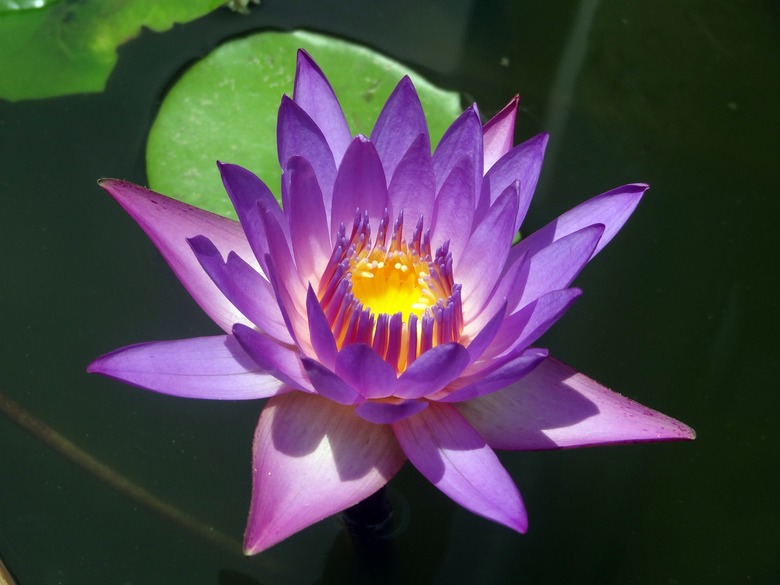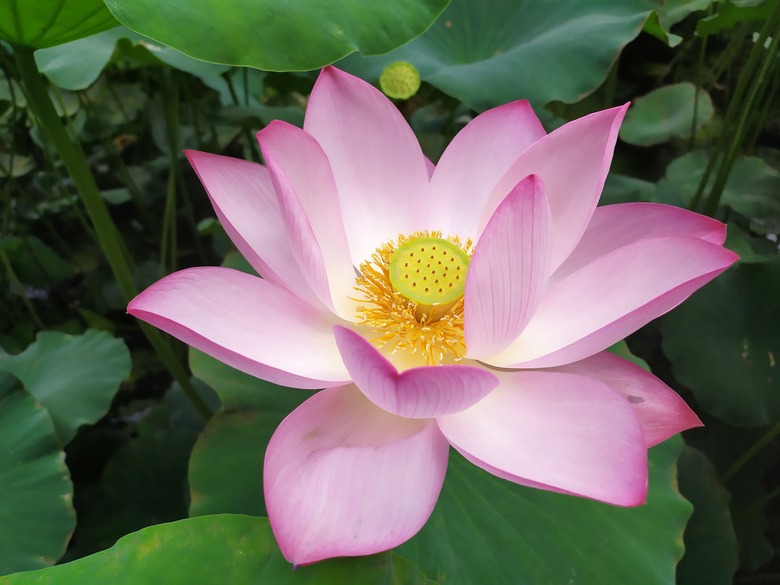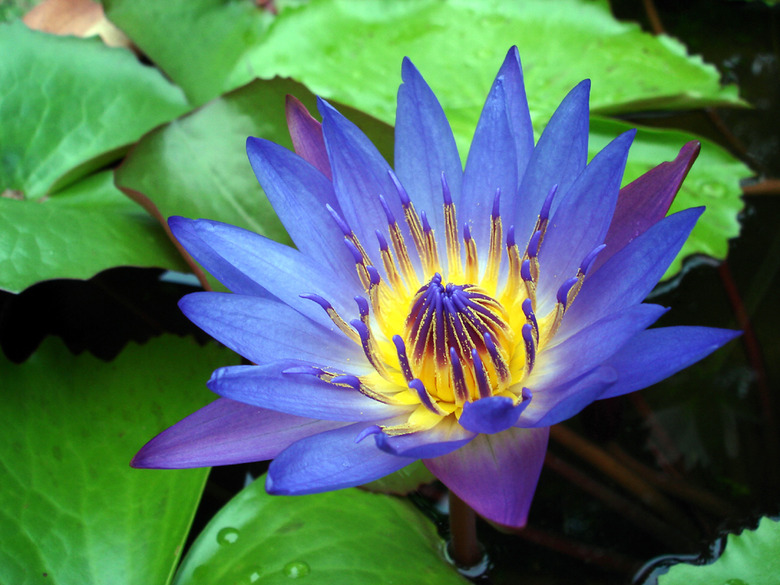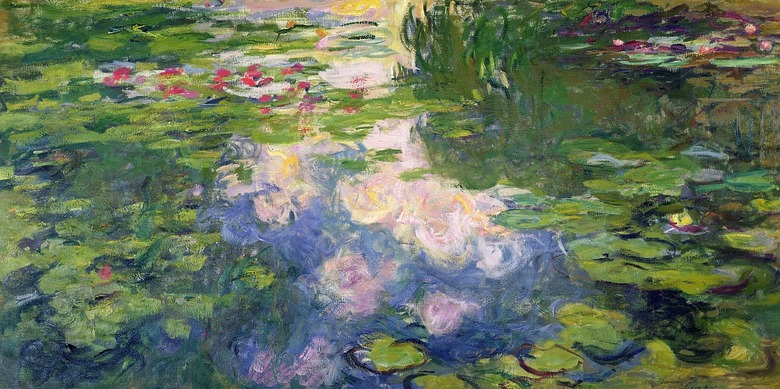What Do Water Lilies Symbolize?
The water lily and the lotus are frequently confused, as they are similar pond-blooming plants that produce stunning flowers, and both are important symbolically in multiple cultures across the world.
They also have some overlapping symbolism, in particular regarding the ideas of the circle of life, birth and rebirth. But first, let's determine how to tell the difference.
Tip
The meanings of water lilies can vary across cultures, symbolizing resurrection and rebirth as well as beauty, purity and enlightenment.
What Are the Differences Between a Water Lily and a Lotus?
The water lily (Nymphaea spp.) and the lotus (Nelumbo spp.) are not the same plant and can be distinguished from each other in a handful of ways.
- **Leaves:** Perhaps the easiest way to quickly distinguish which flower you are looking at is to peer closely at a leaf. The water lily leaf is thick and waxy and always has that signature notch, while the lotus leaf is thinner and somewhat papery.
- **Staying Power:** Lily flowers have more staying power than lotuses, lasting up to two weeks before they wilt and disappear under the water. But the lotus is visible longer above the surface, because its seed pod continues to grow after the flower has faded.
- **Depth of Water:** The lily grows in deeper water as well, from 2 to 5 feet, while the lotus is a shallow grower, preferring just 12 inches of water.
- **Hardiness:** The lily is hardier than the lotus, with some varieties able to grow in areas as cold as USDA plant hardiness zone 4 or even 3, while the lotus cannot withstand temperatures lower than those in zone 9.
Buddhism and Hinduism Water Lily Symbolism
Perhaps the most well-known symbolic interpretation of the water lily is resurrection and rebirth, ideas rooted in both Buddhism and Hinduism.
Out of the mud comes an exquisite beauty, the essence of purity. It closes nightly and then opens again in the morning. When it dies, it slips beneath the murky surface, where it transforms into a fruit and then goes to seed and rises again to produce a new flower.
Buddhists further consider water lilies to represent enlightenment, and the meaning of the water lily also involves the various colors of the water lily. The red lily is known for love, passion and wealth, while the purple bloom stands for royalty, pride and power, sometimes seen as a symbol of peace.
Egypt's Take on the Water Lily
The Egyptian blue water lily (Nymphaea caerulea), often mistakenly called a lotus, was widely rendered in tombs and temples to symbolize unity, frequently depicted with a papyrus flower. The water lily represented Upper Egypt, while the papyrus represented Lower Egypt.
The water lily has also been depicted as a symbol of romance, fertility and sexuality, with many paintings featuring naked women holding a blue water lily flower.
Water Lilies and Monet
The most famous use of water lilies by an artist is the series of about 250 oil paintings by Claude Monet, the French Impressionist painter, produced over many years with large gaps between. These paintings all focus on the water lily and the water itself, with no depiction of the landscape beyond it—although the sky reflection is often seen, effectively blurring the lines between heaven and earth.
Some art critics posit that continually returning to the water lily as the focus of his painting represents a sense of the water lily's own resurrection.
References
- New York Botanical Garden: Water Lily and Lotus — Incomparable Beauties
- Petal Republic: Water Lily Flower Meaning & Symbolism (Essential Guide)
- Florgeous: Water Lily Flower Meaning and Symbolism
- Pansy Maiden: Lily Pad Flower: Meaning, Symbolism, and Colors
- Tour Egypt: Egypt: The Egyptian 'Lotus' Nymphaea Caerulea, the Blue Water Lily
- Claude-Monet.com: 10 Facts You Might Not Know About Claude Monet's "Water Lilies"



